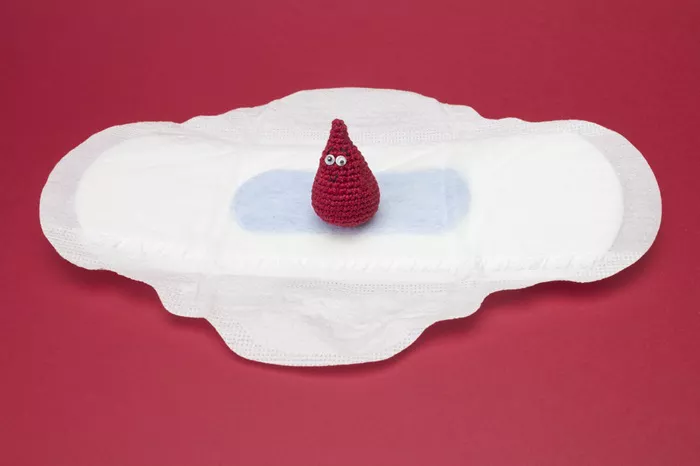Pregnancy is a time of joy and anticipation, but it can also bring moments of concern and confusion. One such concern is spotting during pregnancy. While any bleeding during pregnancy can be alarming, it’s important to understand what normal pregnancy spotting looks like, when it might occur, and when to seek medical advice. This article will delve into these topics, providing detailed information to help expectant mothers navigate this aspect of their pregnancy journey.
Understanding Pregnancy Spotting
Spotting refers to light bleeding from the vagina that is usually brown or pink in color, similar to the end or beginning of a menstrual period. It is generally lighter in flow than a period and does not fill a pad or tampon. Spotting can occur at various stages of pregnancy and can be caused by a variety of factors.
Causes of Spotting in Early Pregnancy
Implantation Bleeding
Definition: Implantation bleeding occurs when the fertilized egg attaches itself to the lining of the uterus.
Timing: This typically happens around six to twelve days after conception, often before a woman even realizes she is pregnant.
Appearance: The spotting is usually light pink to brown and lasts from a few hours to a few days.
Accompanied by: Mild cramping may also occur, similar to menstrual cramps.
Hormonal Changes
Progesterone Levels: Fluctuations in hormone levels, particularly progesterone, can cause light spotting.
Appearance: This type of spotting is usually light and can occur intermittently.
Cervical Changes
Increased Blood Flow: Pregnancy increases blood flow to the cervix, which can lead to light spotting, especially after sexual intercourse or a pelvic exam.
Appearance: This spotting is usually light pink or brown and should not be heavy.
Subchorionic Hemorrhage
Definition: This is bleeding between the uterine wall and the chorionic membrane, where the placenta attaches.
Appearance: It can vary from light spotting to heavier bleeding.
Outcome: Most cases resolve on their own, but it’s important to consult a healthcare provider.
SEE ALSO: What Can Cause a Yeast Infection in Pregnancy?
Spotting in the Second Trimester
While less common than in the first trimester, spotting can still occur in the second trimester. Possible causes include:
Cervical Ectropion
Definition: This condition occurs when cells from the inside of the cervical canal are present on the outside surface of the cervix.
Appearance: Spotting can occur, especially after intercourse.
Placenta Issues
Placenta Previa: This is when the placenta partially or completely covers the cervix.
Appearance: Spotting or bleeding can range from light to heavy and often requires medical attention.
Infections
UTIs or STIs: Urinary tract infections or sexually transmitted infections can cause cervical irritation and light spotting.
Appearance: Spotting is usually light but accompanied by other symptoms such as pain or burning during urination.
Spotting in the Third Trimester
Spotting in the third trimester can be more concerning and should always be evaluated by a healthcare provider. Possible causes include:
Cervical Changes
Effacement and Dilation: As the cervix prepares for labor, it can cause light spotting.
Appearance: This spotting is usually light and pink or brown.
Placental Abruption
Definition: This is a serious condition where the placenta detaches from the uterine wall before delivery.
Appearance: Bleeding can be heavy and is usually accompanied by abdominal pain and contractions.
Preterm Labor
Definition: Labor that begins before 37 weeks of pregnancy.
Appearance: Spotting or bleeding may be accompanied by contractions, back pain, and pressure in the pelvis.
When to Seek Medical Advice
While light spotting can be normal, it’s important to know when to seek medical attention. You should contact your healthcare provider if:
Heavy Bleeding: If you are soaking through a pad in an hour.
Severe Pain: Accompanied by severe abdominal pain or cramping.
Dizziness or Fainting: You feel dizzy or faint.
Passing Tissue: You pass tissue along with the spotting.
Fever: You have a fever or other signs of infection.
Diagnosis and Management
Medical Evaluation
History and Examination: Your healthcare provider will take a detailed history and perform a physical examination.
Ultrasound: An ultrasound may be performed to check the baby’s health and the status of the placenta.
Blood Tests: Blood tests may be done to check hormone levels and rule out infections.
Management Strategies
Rest: In many cases, rest and avoiding strenuous activity can help.
Medication: If an infection is present, antibiotics may be prescribed.
Monitoring: Ongoing monitoring of the pregnancy to ensure the health of both mother and baby.
Emotional Impact and Support
Anxiety and Stress
Normal Reactions: It’s natural to feel anxious or stressed about spotting during pregnancy.
Support Systems: Seek support from your partner, family, friends, or a support group.
Communication with Healthcare Provider
Open Dialogue: Keep an open line of communication with your healthcare provider.
Questions and Concerns: Don’t hesitate to ask questions or express concerns.
Preventive Measures
Prenatal Care
Regular Visits: Attend all prenatal appointments to monitor your health and the baby’s development.
Healthy Lifestyle: Maintain a healthy diet, stay hydrated, and avoid smoking and alcohol.
Self-Care
Rest: Ensure you get enough rest and avoid overexertion.
Hygiene: Practice good hygiene to prevent infections.
Conclusion
Spotting during pregnancy can be a source of anxiety, but understanding its causes and characteristics can help alleviate some of that concern. Normal pregnancy spotting is usually light and short-lived, and while it can occur at various stages, it is often not a sign of a serious problem. However, it’s crucial to know when to seek medical advice to ensure the health and safety of both mother and baby. By staying informed and maintaining open communication with healthcare providers, expectant mothers can navigate this aspect of their pregnancy with greater confidence and peace of mind.


